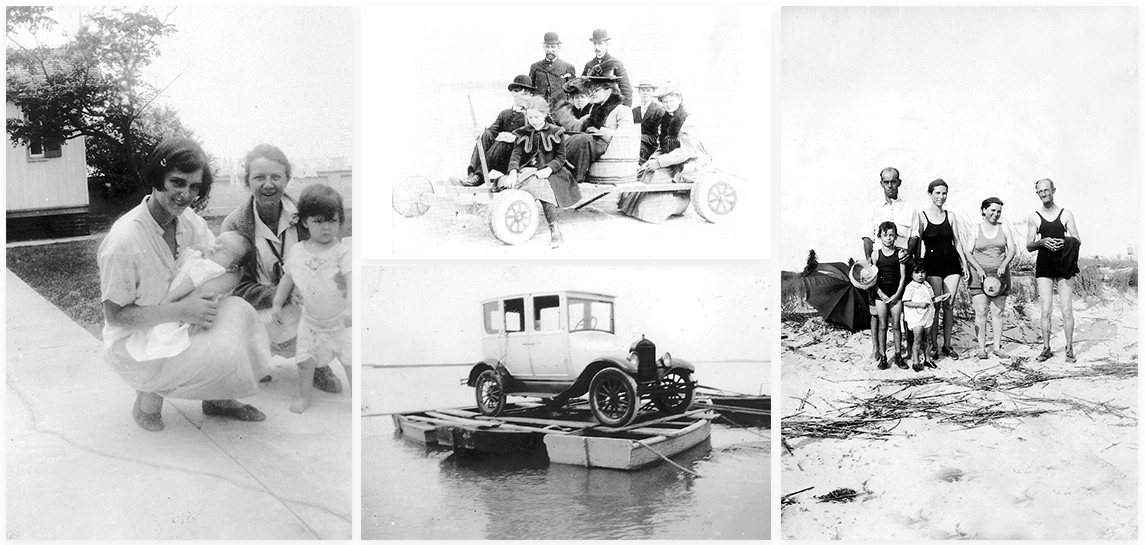
(Clockwise from left) Ester Hecker, wife of keeper William Hecker, holds her daughter, born on the island in October 1929 during a fierce storm; Guests visiting the Sheltering Arms orphanage ride the children’s pull cart on the beach; The Davis and Hecker families on the beach at Morris Island, circa 1935; Lightkeeper Ed Meyer’s Ford Model T, which he moved to Morris Island in 1934 by precariously resting it atop three rowboats.
Morris Island wasn’t always bloody battles and hasty burials. Indeed, people and other living creatures thrived there from the 1870s to just before World War II, when a succession of lightkeepers and their families called it home. Keepers—usually three to four staffed the light at all times—traveled into the city twice a month for supplies, and teachers for the children lived on Morris during weekdays. Residents kept livestock and grew vegetables, and with the advent of the automobile, cars found their way to the island from time to time. In the late 1880s, the Reverend Andrew Ernest Cornish purchased the former Life-Saving Station from the US government and opened the Sheltering Arms orphanage on the island before moving it to Summerville in 1908.

(Clockwise from left) German immigrant Captain John Wieking—the longest serving lightkeeper with 23 years of service—with his wife, Angiline, and their children; W.A. Davis (left) and Captain William Hecker were the last two lightkeepers to serve on Morris Island. They left with their families in 1938 upon evacuation orders; Schoolteacher Elma Bradham traveled by boat to Morris Island every Monday, living with the lightkeepers’ families and teaching the children. On Friday, she returned home to John’s Island; The Morris Island Life-Saving Station was built in 1885 to aid ships in distress. It later served as the Sheltering Arms orphanage.
Photographs by Jon Puckett; courtesy of Douglas W. Bostick; courtesy of Library of Congress; Andy Lassiter; Richard L. Beck; from the Colonel Peter C. Hains collection; from the Faith Ferguson collection; from the Katherine Davis Craig collection, courtesy of Douglas W. Bostick; from the Mrs. Roulain Deveaux collection, courtesy of Douglas W. Bostick; Richard L. Beck; (Lighthouse rendering & Sullivan’s Island Lightouuse) courtesy of Douglas W. Bostick; courtesy of Taylor Bros. Marine Construction, Inc.; Photograph from the Jim Booth collection; from the Katherine Davis Craig collection courtesy of Douglas W. Bostick